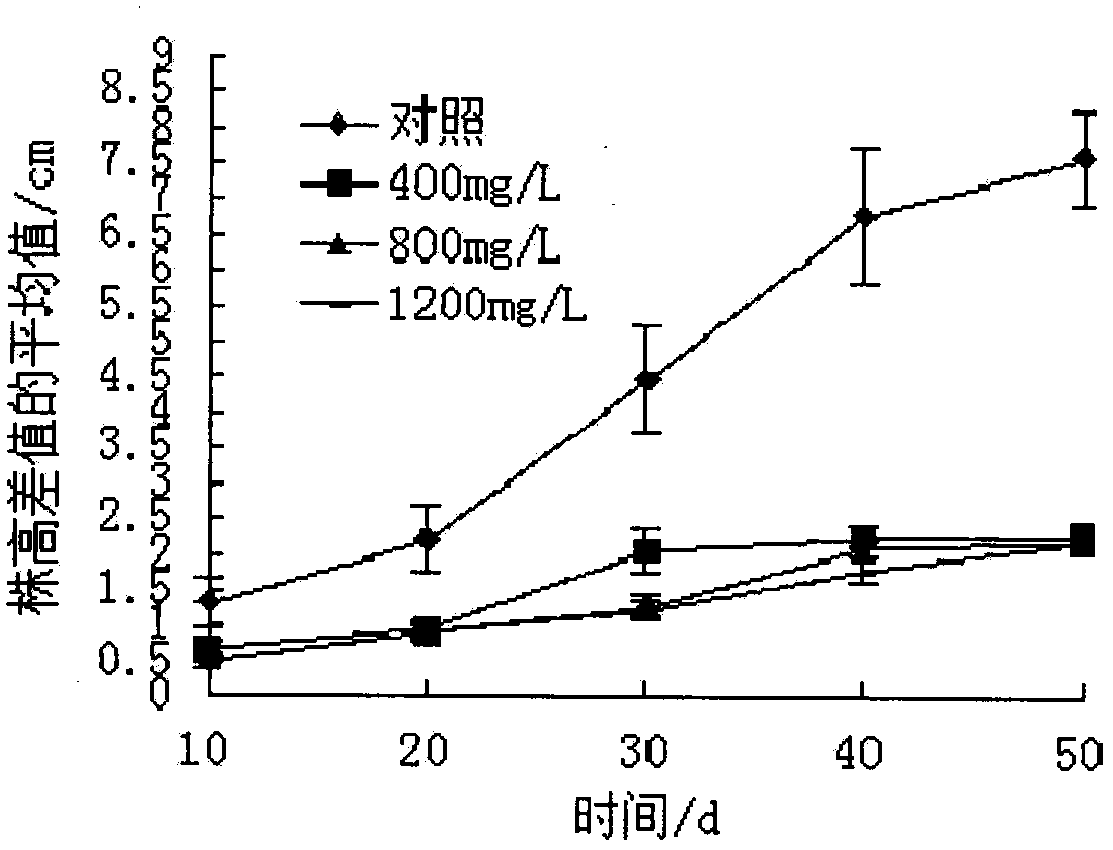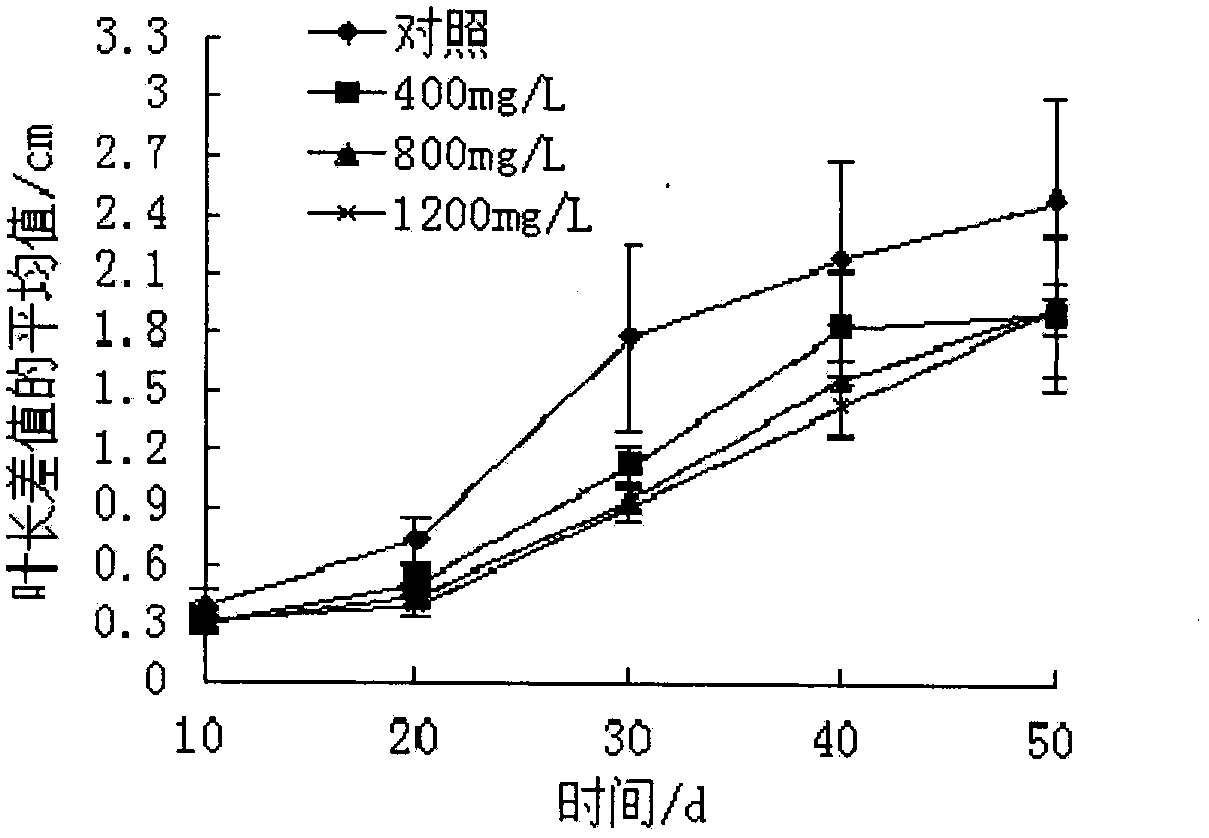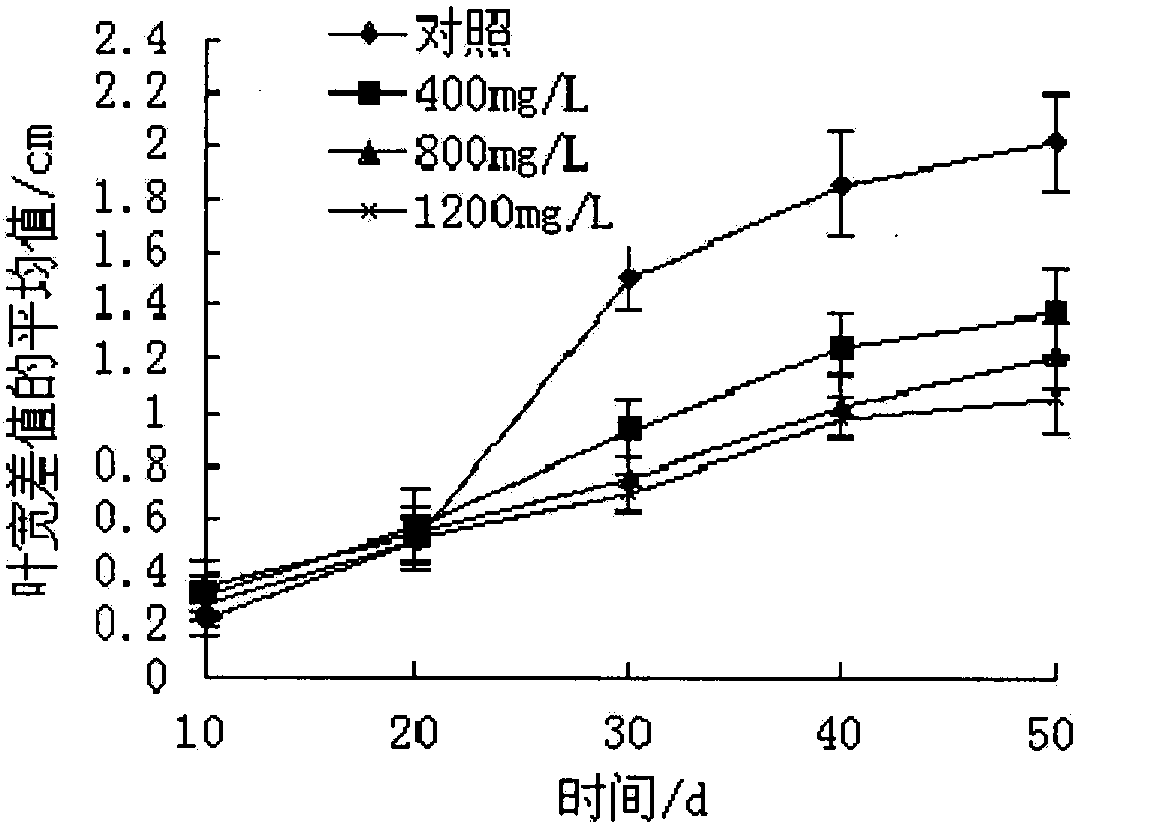Dwarf culture method for gloxinias
A cultivation method and dwarfmeat technology are applied in the field of gloxinia dwarf cultivation, which can solve problems such as inconvenience and achieve the effect of improving ornamental value
- Summary
- Abstract
- Description
- Claims
- Application Information
AI Technical Summary
Problems solved by technology
Method used
Image
Examples
Embodiment 1
[0055] Embodiment 1 chlormequat spraying experiment
[0056] This experiment was carried out on the ground of the winter warm greenhouse of Jinan Academy of Agricultural Sciences. In order to carry out the experiment smoothly and achieve the expected results, the ground of the greenhouse was cleaned in advance, and the greenhouse agricultural film was laid on the ground of the experimental area to prevent the growth of weeds and Water and fertilizer loss.
[0057] 1 Field management
[0058] 1.1 Water and fertilizer management
[0059] Gloxinia likes a humid environment, and its growth requires high air humidity. The high humidity in the greenhouse is just right for the growth of Gloxinia. Daily watering should be controlled in the morning or evening while following the principle of "do not dry or water, water thoroughly". Under normal circumstances, new roots grow out of the substrate and will grow straight down along the periphery of the substrate after touching the pot wa...
Embodiment 2
[0075] Embodiment 2 chlormequat root irrigation experiment
[0076] Same as the experimental conditions and methods of Example 1, the difference is that the processing method and results are different, and the processing method is:
[0077] From the day of treatment (when flower buds begin to differentiate), the growth dynamics of gloxinia were regularly observed, and a total of 5 treatments were carried out (the treatment method was: the chlormequat solution was irrigated by the root watering method, and the chlormequat solution was evenly poured on the potted big rock The roots of Tung tree were treated once every five days; the root irrigation was divided into three groups, the concentrations were: 100mg / L, 300mg / L, and 500mg / L, and the control group was set at the same time, and the roots of the control group were irrigated with clear water), and each plant was irrigated every time. 50ml, 6 measurements, once every 10 days. The indicators to be measured are: plant height,...
Embodiment 3
[0082] Embodiment 3 paclobutrazol spraying experiment
[0083] Same as the experimental conditions and methods of Example 1, the difference is that the sprayed substances and concentrations are different, and the results are different, and the processing method is:
[0084] From the day of treatment (when flower buds begin to differentiate), the growth dynamics of gloxinia were regularly observed, and a total of 5 treatments were carried out (the treatment method was: spraying paclobutrazol solution by foliar spraying method, evenly spraying paclobutrazol solution on potted gloxinia On the leaves and flower buds, the surface is uniformly sprayed wet, and it is treated once every five days; the spraying is divided into three groups, and the spraying concentrations are: 100mg / L, 200mg / L, 300mg / L, and a control group is set at the same time. The control group was sprayed with clear water), measured 6 times, and measured once every 10 days. The indicators to be measured are: plan...
PUM
 Login to View More
Login to View More Abstract
Description
Claims
Application Information
 Login to View More
Login to View More - R&D
- Intellectual Property
- Life Sciences
- Materials
- Tech Scout
- Unparalleled Data Quality
- Higher Quality Content
- 60% Fewer Hallucinations
Browse by: Latest US Patents, China's latest patents, Technical Efficacy Thesaurus, Application Domain, Technology Topic, Popular Technical Reports.
© 2025 PatSnap. All rights reserved.Legal|Privacy policy|Modern Slavery Act Transparency Statement|Sitemap|About US| Contact US: help@patsnap.com



